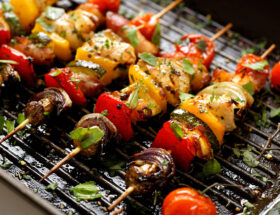Snacks play a staple role in the diets of consumers around the world, with over half making a meal out of snacks at least weekly across breakfast, lunch, and dinner, according to a new report from Mondelez.
The annual ‘State of Snacking’ report, created in partnership with consumer polling specialist The Harris Poll, shows the number of people eating snacks as well as snacks consumed per capita has grown since 2013, with 6% more food snacks eaten per day in 2021, averaging out at 3.3 food snacks per person.
Morning snack consumption grew by 42%, explaining why a standard breakfast was reported to be the most skipped meal of the day.
Some 64% of consumers also said they preferred to eat several small meals across the day instead of three large ones.
The cost of living crisis is also impacting snacking habits, according to the report, with nearly 90% concerned about inflation and six in 10 worried about the availability of their favourite snack foods in stores. This has led consumers to prioritise their money on snacks over meals, with 75% saying “I always find room in my budget for snacks”, and over 60% willing to go out of their way to find their favourite snack or pay extra to have access to some of their favourite childhood snack brands. A further 67% also said they would prefer to purchase fewer favourite snack brands than buy generic alternatives, even if the latter cost less.
Many consumers also believe in the importance of indulgence during the day, with more than eight in 10 people saying they think “chocolate is good for the soul”.
Snacking mindfully was also highlighted as being important to consumers. Some 80% said they would be more likely to take time to savour indulgent snacks, while just over six in 10 said they take time to portion out snacks before eating them. Nearly 70% stated they have checked snack nutrition labels before purchasing.
Sustainability was also noted to be a significant factor in snack buying. Around seven in 10 consumers said eco-friendly packaging made snacking more enjoyable and a further 65% claimed they would pay more for snacks made from ethically sourced ingredients. Some 70% of consumers also reported that eating plant-based would be “better for the future of our planet”, with 54% of consumers reporting trying to eat less animal-derived snacks.
Additional research published in an accompanying report, ‘How The World Snacks’, also shows that different countries follow specific snacking habits. They have been split into the following categories:
- Powerhouse snackers: these countries eat more snacks than the global average. They include Argentina, Brazil, Mexico and Columbia, where snacking occurs at multiple points during the day alongside regular mealtimes.
- On-the-go snackers: these include Indonesia, South Africa, Vietnam and the Philippines, where consumers tend to have fewer structured meals and use snacks as a source of energy throughout the day.
- Mini-meal snackers: Italy, Spain, Russia and China fit into this category, with many using snacks between meals as a main meal substitute.
- Moderate snackers: this group includes India and Nigeria, where consumers regularly work long hours in busy cities. Heavy traffic congestion in both countries which results in a long gap between lunch and dinner times, creates opportunity for snacking, the report says. Street vendors also play an important role in boosting snacking levels in these countries.
- Frugal snackers: these are the lightest eaters worldwide, eating, drinking and snacking little in general. Saudi Arabia, UAE, Egypt and Thailand fit into this category, consuming the fewest main meals and also skipping them the most globally. Snacks also tend to be eaten outside of the home in these countries.
- Low-level snackers: Consumers in Japan and Malaysia fit into this group, working long hours but still following tradition and rarely skipping meals. In both countries, snacking outside of the home isn’t common, especially in Japan where there is a cultural aversion to eating on-the-go.
- Quintessential snackers: the richest countries in the world fit into this group – USA, France, Australia, Germany, Poland, UK, and Canada. Mealtime schedules are flexible in all these places, and there tends to be a higher level of beverage snacks to fill the gaps in between meals. The UK consumes the highest number of drinks per day.










